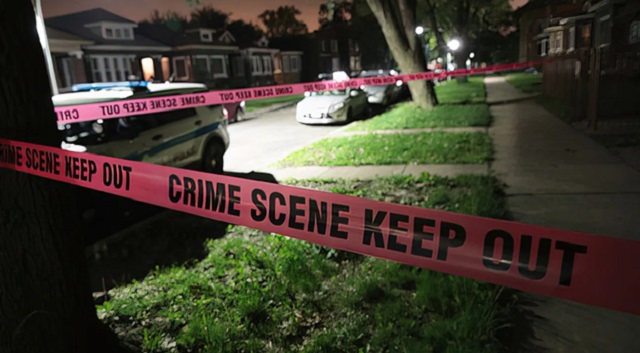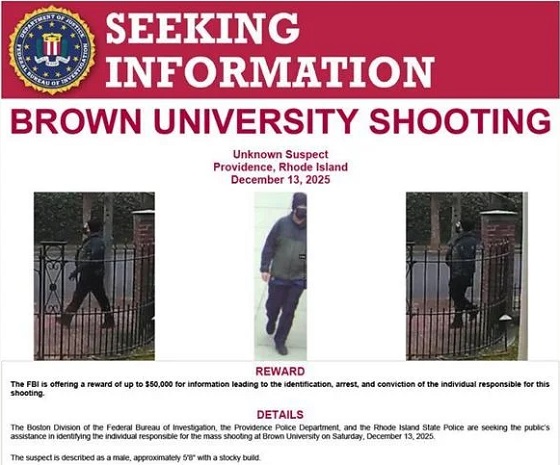Crime
While Illegal Aliens Kill and Rape, Bogus Crime ‘Studies’ Ideology Still Blunt Solutions

From ToddBensman.com
By Todd Bensman
Time for border enforcement hawks to disengage with this intellectually fraudulent sham debate and find this new approach
Advocates of a borderless United States – those who will do or say anything to unleash and maintain a torrent of unimpeded illegal mass border migration – demand that Americans deny an especially resonate outcome: illegal border crossers who murder, kill with drunk driving, rape, rob and beat their hosts.
In their arguments for unmitigated releases into the country of illegal border-crossing strangers, libertarian and progressive liberal pro-illegal immigration, anti-border enforcement activists always point to “studies” that compare illegal alien criminality to U.S. citizen criminality and then conclude that Americans commit as much or more than the illegal immigrants.
Media writers and pundits on the open-borders side parrot the “studies” to deflect detention and deportation proposals that would reduce illegal alien crime on grounds that the main danger to address are U.S. citizen criminals and, while you’re at that, let the border flows continue unimpeded since that population is less worrisome.
“No, Illegal Migrants Aren’t Fueling a Crime Wave,” reads the June 26 headline of a Bloomberg column by Justin Fox in a typical argument against illegal immigration enforcement.
“Migrant Crime Wave Not Supported by Data, Despite High-Profile Cases,” the headline of a February 15 New York Times report states in another one undermining recent demands for border enforcement.
“Ironically, studies indicate that immigrants commit less crime than U.S.-born individuals, and advocates have been pushing for less detention for years,” wrote Michael Lukens, Executive Director at the Capital Area Immigrants’ Rights Coalition, in a February 20 letter to the editor in The Washington Post. “Instead of alarmist tactics, ICE [U.S. Immigration and Customs Enforcement] should be looking at the devastating impacts of detention and releasing immigrants because it is the right thing to do.”
As complicit in this redirection are Republican border hawks and many on the right who abhor unimpeded illegal border immigration because they frequently engage the citizens-versus-illegal-aliens comparison, ever trying to challenge, counter, and undermine the crime comparison studies.
But what opponents of unmitigated mass migration must finally be made to realize, especially now that illegal alien crime is figuring largely for the November 5 presidential election, is that the door their adversaries opened for them leads up a fake stairwell.
The citizen-illegal alien comparison is invalid at the jump and, because it is once again often cited, a different approach is necessary.
An invalid apples-to-rocks comparison
The notion that policy thinkers and media pundits must compare the measured crime rates of citizens and illegal aliens – it’s unclear who initially devised it – has no foundation in academic science because the two compared groups are not similar enough.
Here is why: Illegal immigrants – and not ever American citizens and legal residents – are uniquely subject to an elaborate, expansive, and lawful government deportation and detention apparatus that Congress built to block and remove them from the country, in some part, so that they are not present to commit crimes. The same apparatus, of course, cannot touch American citizens who will commit crimes.
To restate the seemingly obvious, illegal aliens blocked at the border or who are quickly removed from the country cannot inflict any harm on American inhabitants because they are not present. That means every single crime committed by an illegally present immigrant should never have happened, was avoidable, preventable, and unnecessary whereas the Department of Homeland Security detention and removal machine cannot prevent a single American citizen crime. The United States, unfortunately, has no such choice but to contend with its criminal citizens before, during and after every crime they commit.
What this means is that all crimes committed by illegal aliens amount to a 100-percent net-gain burden on American society and its criminal justice system that was always largely preventable and unnecessary.
These differences between the two groups amount to an insurmountable Grand Canyon for purposes of comparison, apples-to-rocks, thus invalid for any academic study at the jump.
The libertarian and progressive liberals who created and purveyed the citizen-versus-illegal immigrant crime rate comparison debate should be called out for their campaign of misdirection or, if you will “gas-lighting.”
The misdirection campaign has always neutralized deserved political backlash against the highly resonate problem of 100 percent unnecessary extra crime that illegal aliens commit in the United States and stunted political momentum for policy remedies that would reduce both. By design, the mass illegal immigration and its associated 100 percent extra crime victimization continue while those who either favor or disfavor illegal immigration fruitlessly wage battles over a totally invalid proposition.
A different approach is long overdue.
The comparison stands discredited anyway but…
Border enforcement hawks have done much to discredit the studies that conclude American citizens commit more crime than illegal aliens. For instance, the Center for Immigration Studies has found that the activist-academics who favor unimpeded illegal immigration have misused data to undercount criminal alien crime. (See Misuse of Texas Data Understates Illegal Immigrant Crime and Continued Misuse of Texas Crime Data)
But as this 2024 presidential campaign period shows, efforts to engage the comparison debate have done little to suppress its continued impact of nullifying momentum for policy change. Mass media outlets still default to the original ruse at a time when a new approach to this discussion is most needed at this key time in the American political cycle, presenting an opportunity for the polity to rise up on good information and demand a halt to the mass border incursions that fuel 100-percent unnecessary net increases illegal alien crime.
Even though they have done a laudable job at discrediting the original studies, border enforcement advocates should disengage from further such distracting attempts and call out the comparison studies as the mendacious intellectual sham they are, on grounds that the two groups are too different to be compared. They must parry every citation of the studies and re-direct to the correct policy discussion, which is the extent to which current American leadership uses existing border enforcement law to block, detain, and deport. They must argue that all illegal alien crime is a 100 percent net addition to America’s crime problem, no matter what the rates per alien are, and that American citizen crime rates are irrelevant to the discussion of a solution to that.
They must only ever argue that blocking, detaining and deporting illegal aliens are the main levers that enable or prevent illegal alien crime in the United States. Most Americans will instinctively understand that this objective truth is on their side.
No one on either side of this policy issue should ever again engage in this immoral sham, but border enforcement hawks should parry and thrust elsewhere.
Graves that need never have been dug
Having said all of this, the comparison “studies” ruse was useful in one important regard; it surfaced rare data that establishes a rare and important measure of this preventable illegal immigrant crime. The data used in them comes from the only U.S. state that has tracked its unnecessary, all-net-gain illegal immigrant crime for years: Texas.
Border enforcement advocates should use this rare data set, not to compare the incomparable but, rather, to emphasize that it was entirely a net total – preventable – addition to overall U.S. crime. The Texas data should be used to emphasize a need for the United States to protect its citizens by exercising existing deportation and detention requirements embodied in the Immigration and Naturalization Act.
America may never know the extent to which alien crime that will result from the three-plus years of the Biden border crisis, which has ushered into the country at least seven million strangers as of this writing. Most local, state and federal agencies will not log immigration status of criminals.
But the Texas Department of Public Safety tracks the immigration status of suspects who are booked into local jails through a program that submits fingerprints to the FBI for criminal history and warrant checks, and to DHS. The agencies return immigration status information on those whose fingerprints were already on file (which is not all of them).
From the resulting Texas statistics, we catch a sound partial glimpse at the vaster sea of nationwide blood and carnage that was up to 100 percent preventable and unnecessary, of murder, rape, child abuse, burglary, felony theft, drug trafficking, alien smuggling and drunken driving manslaughter.
Between June 1, 2011 and June 30, 2024, these 437,000 criminal aliens (308,000 classified as illegal) were charged with more than 533,000 unnecessary extra criminal offenses that should never have happened.
Those included 997 homicide charges (resulting in 498 convictions as of June 2024), 1,245 kidnapping charges (resulting in 354 convictions), 6,744 sexual assault charges (resulting in 3,537 convictions), 7,763 sexual offense charges (resulting in 3,537 sexual offense convictions), and 6,560 weapons charges (resulting in 2,138 weapons convictions). Texas includes another category called “All Other Offenses,” which tallies 298,912 (and 103,265 convictions).
The Texas data reveals hundreds of dead people who should be alive, thousands of sexual assault and sexual offense victims who should never have suffered the trauma, and tens of thousands of assault charges involving victims who would not have been hurt.
The Texas data shows that criminal aliens took up police time and clogged up the American justice system that could have been more dedicated to American criminals. Thousands of drugs, burglary, robbery and weapons charges need not have jammed the Texas criminal justice systems at taxpayer cost.
In all, more than 32,000 people identified by DHS as living in the country illegally were imprisoned in Texas.
But the number of criminal illegal aliens appears to be a highly undercounted one even when a state like Texas is working hard at the tally. We know this because the Texas program found that another 10,748 illegal aliens since 2011, whose immigration status hadn’t been federally determined at the time of their arrests, were only later determined to be illegally present when they were sent to Texas state prisons. There must be far more.
Among them were prisoners serving time for 134 more unnecessary, preventable homicides.
The graves of all their dozens of dead victims are real even as nary any of them have drawn national media attention like a mere few have lately.
The bamboozlers bear responsibility for tragedies that deportation would have prevented. Far too often, the preventable violence is exceptionally brutal, scenes from the most extreme horror movies in volumes far too numerous to catalogue here.
The huge scale of seven or ten million foreign national strangers allowed to enter the United States in three years means the size of the criminal class among them must be historically large as well. All their crime will be 100 percent extra on top of U.S. citizen crime and potentially reducible by up to 100 percent in with the exercise of lawful detention and deportation.
Far fewer bad things will happen if Americans finally slam closed the wrong door with its fake stairwell.
Crime
Brown University shooter dead of apparent self-inflicted gunshot wound

From The Center Square
By
Rhode Island officials said the suspected gunman in the Brown University mass shooting has been found dead of an apparent self-inflicted gunshot wound, more than 50 miles away in a storage facility in southern New Hampshire.
The shooter was identified as Claudio Manuel Neves-Valente, a 48-year-old Brown student and Portuguese national. Neves-Valente was found dead with a satchel containing two firearms inside in the storage facility, authorities said.
“He took his own life tonight,” Providence police chief Oscar Perez said at a press conference, noting that local, state and federal law officials spent days poring over video evidence, license plate data and hundreds of investigative tips in pursuit of the suspect.
Perez credited cooperation between federal state and local law enforcement officials, as well as the Providence community, which he said provided the video evidence needed to help authorities crack the case.
“The community stepped up,” he said. “It was all about groundwork, public assistance, interviews with individuals, and good old fashioned policing.”
Rhode Island Attorney General Peter Neronha said the “person of interest” identified by private videos contacted authorities on Wednesday and provided information that led to his whereabouts.
“He blew the case right open, blew it open,” Neronha said. “That person led us to the car, which led us to the name, which led us to the photograph of that individual.”
“And that’s how these cases sometimes go,” he said. “You can feel like you’re not making a lot of progress. You can feel like you’re chasing leaves and they don’t work out. But the team keeps going.”
The discovery of the suspect’s body caps an intense six-day manhunt spanning several New England states, which put communities from Providence to southern New Hampshire on edge.
“We got him,” FBI special agent in charge for Boston Ted Docks said at Thursday night’s briefing. “Even though the suspect was found dead tonight our work is not done. There are many questions that need to be answered.”
He said the FBI deployed around 500 agents to assist local authorities in the investigation, in addition to offering a $50,000 reward. He says that officials are still looking into the suspect’s motive.
Two students were killed and nine others were injured in the Brown University shooting Saturday, which happened when an undetected gunman entered the Barus and Holley building on campus, where students were taking exams before the holiday break. Providence authorities briefly detained a person in the shooting earlier in the week, but then released them.
Investigators said they are also examining the possibility that the Brown case is connected to the killing of a Massachusetts Institute of Technology professor in his hometown.
An unidentified gunman shot MIT professor Nuno Loureiro multiple times inside his home in Brookline, about 50 miles north of Providence, according to authorities. He died at a local hospital on Tuesday.
Leah Foley, U.S. attorney for Massachusetts, was expected to hold a news briefing late Thursday night to discuss the connection with the MIT shooting.
Crime
Bondi Beach Survivor Says Cops Prevented Her From Fighting Back Against Terrorists


From the Daily Caller News Foundation
A woman who survived the Hanukkah terrorist attack at Bondi Beach in Australia said on Monday that police officers seemed less concerned about stopping the attack than they were about keeping her from fighting back.
A father and son of Pakistani descent opened fire on a Hanukkah celebration Sunday, killing at least 15 people and wounding 40, with one being slain on the scene by police and the other wounded and taken into custody. Vanessa Miller told Erin Molan about being separated from her three-year-old daughter during Monday’s episode of the “Erin Molan Show.”
“I tried to grab one of their guns,” Miller said. “Another one grabbed me and said ‘no.’ These men, these police officers, they know who I am. I hope they are hearing this. You are weak. You could have saved so many more people’s lives. They were just standing there, listening and watching this all happen, holding me back.”
Dear Readers:
As a nonprofit, we are dependent on the generosity of our readers.
Please consider making a small donation of any amount here.
Thank you!
WATCH:
“Two police officers,” Miller continued. “Where were the others? Not there. Nobody was there.”
New South Wales Minister of Police Yasmin Catley did not immediately respond to a request for comment from the Daily Caller News Foundation about Miller’s comments.
Australian Prime Minister Anthony Albanese vowed to enact further restrictions on guns in response to the attack at Bondi Beach, according to the Associated Press. The new restrictions would include a limit on how many firearms a person could own, more review of gun licenses, limiting the licenses to Australian citizens and “additional use of criminal intelligence” to determine if a license to own a firearm should be granted.
Sajid Akram, 50, and Naveed Akram, 24, reportedly went to the Philippines, where they received training prior to carrying out the Sunday attack, according to the Australian Broadcasting Corporation. Naveed Akram’s vehicle reportedly had homemade ISIS flags inside it.
Australia passed legislation that required owners of semi-automatic firearms and certain pump-action firearms to surrender them in a mandatory “buyback” following a 1996 mass shooting in Port Arthur, Tasmania, that killed 35 people and wounded 23 others. Despite the legislation, one of the gunmen who carried out the attack appeared to use a pump-action shotgun with an extended magazine.
-

 Alberta2 days ago
Alberta2 days agoThe Canadian Energy Centre’s biggest stories of 2025
-

 Business2 days ago
Business2 days agoOttawa Is Still Dodging The China Interference Threat
-

 Business2 days ago
Business2 days agoResurfaced Video Shows How Somali Scammers Used Day Care Centers To Scam State
-

 Business24 hours ago
Business24 hours agoDark clouds loom over Canada’s economy in 2026
-

 Business23 hours ago
Business23 hours agoThe Real Reason Canada’s Health Care System Is Failing
-

 Business2 days ago
Business2 days agoMinneapolis day care filmed empty suddenly fills with kids
-

 Business2 days ago
Business2 days agoDisclosures reveal Minnesota politician’s husband’s companies surged thousands-fold amid Somali fraud crisis
-

 Addictions20 hours ago
Addictions20 hours agoCoffee, Nicotine, and the Politics of Acceptable Addiction









